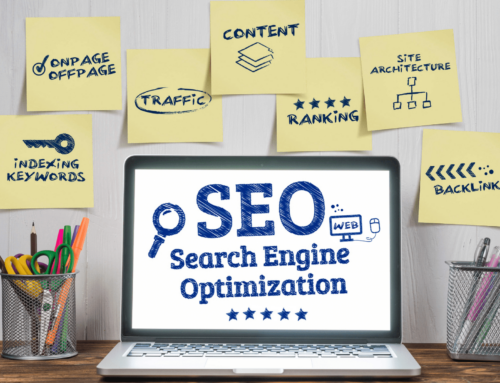The world is rapidly going digital, and for nonprofit organizations, it is essential to keep up with the times. However, despite the increasing reliance on digital platforms, there still exists a digital divide, especially when it comes to older donors. Many nonprofits struggle to reach older donors who might not be as tech-savvy as younger generations. This digital divide can be a significant barrier to fundraising efforts, but it doesn’t have to be that way.
If you’re a nonprofit professional, you know how important it is to reach donors of all ages. Older donors are often some of the most generous and committed supporters of nonprofit organizations. But how do you reach them in a digital world? In this article, we will explore 15 ways that nonprofits can bridge the digital divide and successfully engage older donors.
From creating user-friendly websites to using social media platforms that older donors are more likely to use, we’ll cover a range of strategies to help you effectively communicate with this important demographic. We’ll also discuss the importance of personalizing your outreach, creating targeted messaging, and offering multiple ways for donors to give.
Whether you’re a nonprofit professional who is just starting out or an experienced fundraiser looking for new ways to engage older donors, this article is for you. By implementing these strategies, you can bridge the digital divide and build stronger relationships with your older donors. So, let’s dive in and learn more about how to reach older donors in a digital world!
1: Create a user-friendly website that is easy to navigate and provides clear information about your organization’s mission and impact.
As a nonprofit organization, your website is the face of your mission and impact. It is often the first point of contact between potential donors and your organization. Therefore, it is essential to have a website that is user-friendly and easy to navigate. A well-designed website can help your organization build a strong brand identity and establish credibility among your target audience.
When designing your website, it is important to keep the user experience in mind. Make sure your website is visually appealing and easy to navigate. Use clear and concise language to explain your organization’s mission and impact. Avoid using jargon or technical language that may confuse your audience.
Your website should also be mobile-friendly, as more and more people are accessing the internet using their mobile devices. In addition, make sure your website is optimized for search engines so that it can be easily discovered by people searching for information on topics related to your organization.
By creating a user-friendly website, you can attract more donors and build a stronger brand identity for your organization.
2: Utilize social media platforms such as Facebook and Twitter to reach older donors where they are spending more of their time online.
Social media has become an integral part of our daily lives. Many people, including older adults, spend a significant amount of time on social media platforms such as Facebook and Twitter. Therefore, it is important for nonprofit organizations to utilize these platforms to reach their target audience.
By using social media, you can connect with older donors and keep them informed about your organization’s activities and impact. You can also use social media to share stories and testimonials from your beneficiaries, which can help build trust and credibility among your audience.
When using social media, it is important to create engaging content that will capture the attention of your audience. Use images and videos to make your content more visually appealing. You can also ask your followers to share their own stories and experiences, which can help create a sense of community around your organization.
By using social media platforms such as Facebook and Twitter, you can reach a wider audience and build stronger relationships with your donors.
3: Use email marketing to send personalized messages and updates to older donors who may not be as active on social media.
While social media is a powerful tool for reaching a large audience, not all older adults are active on these platforms. Therefore, it is important to use other channels, such as email marketing, to reach this audience.
Email marketing allows you to send personalized messages and updates to your donors, which can help build stronger relationships. You can use email to thank your donors for their contributions, provide updates on your organization’s activities and impact, and share stories and testimonials from your beneficiaries.
When using email marketing, it is important to segment your audience and send targeted messages to each segment. For example, you may want to send different messages to first-time donors, recurring donors, and major donors. By sending personalized messages, you can make your donors feel valued and appreciated.
By using email marketing, you can keep your donors informed and engaged, even if they are not active on social media.
4: Implement a text-to-donate program that allows donors to easily make contributions via their mobile devices.
With the rise of mobile devices, many people prefer to make donations using their smartphones. Therefore, it is important for nonprofit organizations to offer a text-to-donate program that allows donors to easily make contributions using their mobile devices.
A text-to-donate program is a simple and convenient way for donors to make contributions. Donors can simply send a text message with their donation amount, and the donation will be charged to their mobile phone bill.
When implementing a text-to-donate program, it is important to promote it through all of your channels, including social media, email, and your website. You should also make sure that the process is user-friendly and secure, so that donors feel confident in making contributions.
By offering a text-to-donate program, you can make it easier for donors to support your organization, which can lead to increased donations and stronger relationships with your donors.
5: Offer online donation options that are user-friendly and secure.
In addition to a text-to-donate program, it is important for nonprofit organizations to offer online donation options that are user-friendly and secure. Many donors prefer to make donations online, as it is convenient and easy to use.
When offering online donation options, it is important to make sure that the process is user-friendly and secure. You should use a secure payment gateway to process donations, and make sure that donors can easily navigate the donation process.
In addition, you should provide donors with the option to make recurring donations, which can help increase the lifetime value of each donor.
By offering online donation options, you can make it easier for donors to support your organization, which can lead to increased donations and stronger relationships with your donors.
6: Host virtual events and webinars that cater to older donors’ interests and provide opportunities for engagement.
With the COVID-19 pandemic, many nonprofit organizations have had to cancel in-person events and fundraisers. Therefore, it is important to offer virtual events and webinars that cater to older donors’ interests and provide opportunities for engagement.
Virtual events and webinars can be a great way to connect with your donors and provide them with valuable information. You can host events on topics such as healthcare, financial planning, and social issues that are relevant to older adults.
When hosting virtual events and webinars, it is important to make sure that the technology is user-friendly and accessible. You should also provide opportunities for interaction and engagement, such as Q&A sessions and breakout rooms.
By hosting virtual events and webinars, you can continue to engage with your donors and provide them with valuable information, even during challenging times.
7: Create video content that highlights your organization’s impact and mission, and share it on your website and social media channels.
Video content is becoming increasingly popular on social media platforms such as Facebook and YouTube. Therefore, it is important for nonprofit organizations to create video content that highlights their impact and mission.
You can create videos that showcase the work that your organization does, as well as testimonials from your beneficiaries. You can also create videos that explain your organization’s mission and why it is important.
When creating video content, it is important to keep it engaging and visually appealing. Use high-quality images and videos, and make sure that the content is informative and easy to understand.
By creating video content, you can capture the attention of your audience and showcase the impact of your organization.
8: Use targeted advertising on social media platforms to reach older donors who may not be familiar with your organization.
Social media platforms such as Facebook and Twitter offer powerful targeting options that allow you to reach specific audiences. Therefore, it is important to use targeted advertising to reach older donors who may not be familiar with your organization.
When using targeted advertising, it is important to define your target audience and create ads that are relevant to their interests and needs. You can also use retargeting to reach people who have already interacted with your organization online.
By using targeted advertising, you can reach a wider audience and attract new donors to your organization.
9: Use search engine optimization (SEO) techniques to ensure your website is easily discoverable by older donors who may be searching for information online.
Search engine optimization (SEO) is the process of optimizing your website to improve its visibility and ranking on search engine results pages. By using SEO techniques, you can ensure that your website is easily discoverable by older donors who may be searching for information online.
When using SEO, it is important to use relevant keywords and phrases in your website content. You should also use descriptive titles and meta descriptions, and make sure that your website is mobile-friendly.
In addition, you should build high-quality backlinks to your website, which can help improve your website’s authority and ranking.
By using SEO techniques, you can improve your website’s visibility and attract more traffic from older donors who are searching for information online.
10: Use donor management software that allows you to track and analyze donor behavior and preferences.
Donor management software can help nonprofit organizations track and analyze donor behavior and preferences. By using donor management software, you can gain insights into your donors’ giving patterns and preferences, which can help you develop targeted fundraising campaigns.
Donor management software can also help you track the success of your fundraising campaigns and measure your organization’s impact.
When choosing donor management software, it is important to choose a solution that is user-friendly and customizable. You should also make sure that the software integrates with other tools and platforms that you use.
By using donor management software, you can gain insights into your donors and improve your fundraising efforts.
11: Provide online resources and information about planned giving options, which can be particularly appealing to older donors.
Planned giving options, such as bequests and charitable gift annuities, can be particularly appealing to older donors. Therefore, it is important to provide online resources and information about these options.
When providing information about planned giving, it is important to make it easy to understand and accessible. You can create content such as articles, videos, and infographics that explain the benefits of planned giving and how it works.
In addition, you should provide donors with the option to speak with a planned giving expert who can answer their questions and provide personalized advice.
By providing information about planned giving options, you can attract more donations from older donors who are interested in leaving a legacy for your organization.
12: Consider partnering with other organizations that cater to older adults to expand your reach and visibility.
Partnering with other organizations that cater to older adults can be a great way to expand your reach and visibility. You can collaborate with organizations such as senior centers, retirement communities, and healthcare providers to reach a wider audience.
When partnering with other organizations, it is important to identify common goals and interests. You should also make sure that the partnership is mutually beneficial and provides value to both organizations.
By partnering with other organizations, you can reach a wider audience and build stronger relationships with your donors.
13: Offer virtual volunteer opportunities that allow older donors to contribute to your organization from the comfort of their homes.
Virtual volunteer opportunities can be a great way to engage older donors who may not be able to volunteer in person. You can offer virtual volunteer opportunities such as online tutoring, social media management, and fundraising support.
When offering virtual volunteer opportunities, it is important to make sure that the tasks are meaningful and provide value to your organization. You should also provide volunteers with the necessary training and support.
By offering virtual volunteer opportunities, you can engage older donors and provide them with a way to contribute to your organization from the comfort of their homes.
14: Use storytelling to connect with older donors and showcase the impact of their donations.
Storytelling is a powerful tool that can help nonprofit organizations connect with their donors and showcase the impact of their donations. You can use storytelling to share the stories of your beneficiaries and how your organization has helped them.
When using storytelling, it is important to make the stories personal and relatable. Use real-life examples and anecdotes to illustrate your organization’s impact.
In addition, you should make sure that your storytelling is consistent across all of your channels, including your website, social media, and email marketing.
By using storytelling, you can connect with your donors on an emotional level and inspire them to continue supporting your organization.
15: Provide exceptional customer service and support to older donors who may have questions or concerns about making online donations or using digital platforms.
Providing exceptional customer service and support is essential for building strong relationships with your donors. This is especially important for older donors who may have questions or concerns about making online donations or using digital platforms.
When providing customer service and support, it is important to be responsive and helpful. You should provide clear and concise instructions on how to make donations online, and be available to answer any questions or concerns that your donors may have.
In addition, you should make sure that your website and digital platforms are user-friendly and accessible. You can offer tutorials and guides that explain how to use these platforms.
By providing exceptional customer service and support, you can build trust and credibility with your donors and inspire them to continue supporting your organization.
In conclusion, bridging the digital divide between nonprofits and older donors is crucial for organizations to sustain their funding and achieve their goals. With the increasing use of digital technologies, nonprofits can no longer afford to ignore the older demographic, as they represent a significant source of donations and support. The 15 strategies outlined in this article are just a starting point for nonprofits seeking to reach and engage older donors in a digital world.
By embracing new technologies, adapting communication channels, and tailoring messages to the needs and preferences of older donors, nonprofits can build meaningful and long-lasting relationships with this demographic. Whether it’s using social media platforms, creating mobile-friendly websites, or offering online donation options, there are plenty of ways for nonprofits to leverage digital tools to connect with older donors.
However, it’s important to remember that digital strategies should not replace traditional forms of communication and engagement. Nonprofits should continue to invest in face-to-face interactions, print materials, and other offline channels that are still valuable to many older donors. The key is to find the right balance between digital and traditional approaches, and to create a seamless and integrated experience for donors across all channels.
Ultimately, the success of nonprofits in reaching older donors in a digital world will depend on their willingness to adapt and experiment with new strategies. By staying up-to-date with the latest trends and technologies, and by listening to the needs and feedback of their donors, nonprofits can build a stronger and more resilient organization that can make a real difference in the world.





